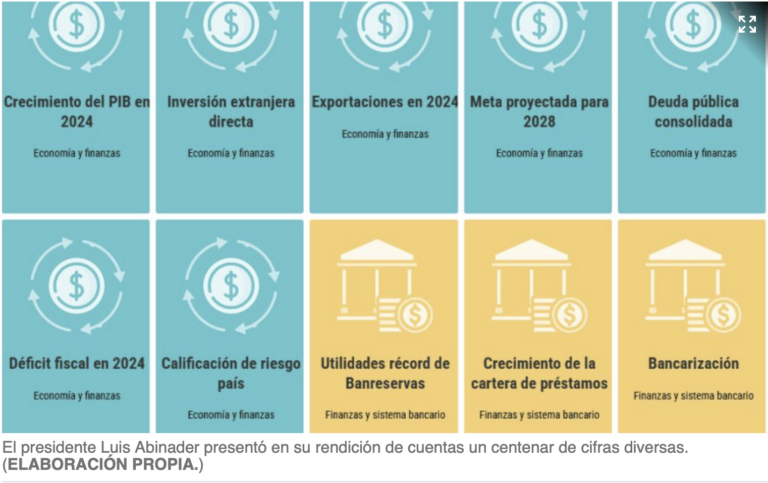For eight consecutive months, free trade zones and local manufacturing have contributed in a sustained manner to the performance of the Dominican economy, with expansions of 26.3% and 12.4%, respectively, which places them within the five best-performing activities according to preliminary results of the Monthly Indicator of Economic Activity (IMAE), published by the Central Bank.
From January to August of this year, the dynamism of free zone exports amounted to US$4,681.2 million for a growth of 12.5% with respect to 2019. Punctually, for the month of August 2021 said exports show an increase of 10.4%, while national exports exhibit an increase of 29.6%, both compared to the same month of 2019 (pre-COVID-19).
The IMAE reached a cumulative variation of 13.0% during the first eight months of the year and only in the month of August registered a year-on-year increase of 11.7%.
The data published by the Central Bank explains that the activities that registered positive variation rates of their real added value in inter-annual terms were: Construction (32.4%), Hotels, Bars and Restaurants (26.6%), Free Trade Zone Manufacturing (26.3%), Transportation and Storage (14.6%), Local Manufacturing (12.4%), Commerce (11.4%) and Mining and Quarrying (9.2%). Likewise, Energy and Water (3.9%), Communications (3.6%), Other Services (3.3%), Real Estate and Rental Activities (2.5%) and Agriculture and Livestock (2.1%).
Industries increase production volume
The expansion of local manufacturing is mainly attributed to the increase in production volumes of goods related to the manufacture of base metals, manufacture of non-metallic mineral products, manufacture of chemical substances and products, manufacture of alcoholic and non-alcoholic beverages, and tobacco products, and other manufacturing industries.
This growth has not only been verified through export volumes and foreign exchange generated by this concept but has also translated into the recovery and creation of new jobs.
In this sense, the labor market continues on the path of recovery with respect to the previous year, according to the results of the Continuous National Labor Force Survey (ENCFT) corresponding to the April-June 2021 quarter, the last quarter published.
After the severe impact caused by the COVID-19 pandemic that warranted confinement measures that generated a significant reduction in the level of employed people in the economy and limited the active search for work. This trend is consistent with the increase in employment in the administrative records of formal workers of the Social Security Treasury (TSS).
Impact of credits
Loans to the manufacturing sector have increased by 8.0% y-o-y, reflecting good expectations for the sector. This in turn has an indirect impact on the improvement in the flow of foreign exchange, which, added to the strong reserve position (US$12,932.3 million as of September 30), have contributed to maintaining the relative stability of the exchange rate, reflected in an absence of exchange rate pressures during the current year, such that as of September 30, the Dominican peso exhibited an appreciation of 3.6%.
Source:
Hoy



